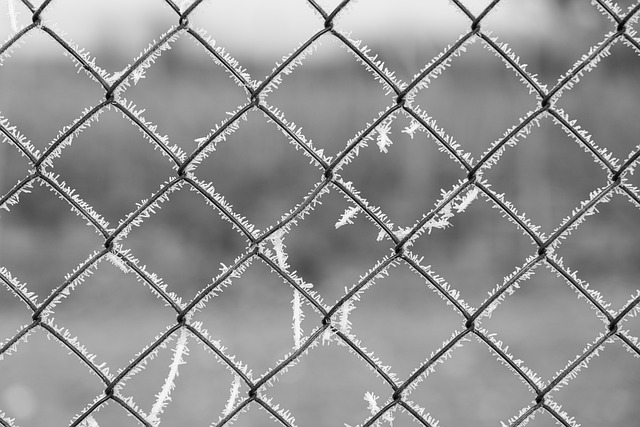New Bedford residents often turn to fence repairs and installations to enhance their outdoor spaces, ensuring privacy, security, and aesthetic appeal. This comprehensive guide delves into all aspects of this process, from identifying specific New Bedford fence needs to selecting suitable styles and materials, navigating planning and permitting, and offering a step-by-step installation process. Additionally, we explore common issues, repair techniques, and maintenance tips for your new fence.
- Understanding New Bedford Fence Needs
- Choosing the Right Fence Style and Material
- Planning and Permitting for Installation
- Step-by-Step Guide to Fence Installation
- Common Issues and Repair Techniques
- Maintaining Your New Fence
Understanding New Bedford Fence Needs
Fences play a vital role in any New Bedford property, providing security, privacy, and aesthetic appeal. However, they require regular maintenance to ensure their longevity and effectiveness. Understanding the specific needs of your fence is the first step towards effective repair and installation. The climate, for instance, can be harsh in New Bedford, with snow and salt damage being common during winters. Additionally, local wildlife and nearby bodies of water might necessitate stronger materials or specific designs to resist erosion and prevent damage from debris.
Moreover, each property has unique requirements. Some homeowners may prioritize privacy, while others focus on security. The style of the house, surrounding landscape, and personal preferences all influence what kind of fence is most suitable. By assessing these factors, you can make informed decisions when repairing or installing a fence, ensuring it not only meets but exceeds your expectations.
Choosing the Right Fence Style and Material
When considering new Bedford fence repair or installation, selecting the right style and material is a crucial first step. The choice should align with your personal aesthetic preferences, property layout, and functional needs. Different fence styles like wood, vinyl, chain link, or iron offer varying levels of privacy, durability, and maintenance requirements. For instance, wooden fences exude a natural charm but demand regular upkeep, while vinyl fences are low-maintenance alternatives.
Material selection should also factor in climate conditions and local regulations. In snowy regions, resilient materials like treated wood or metal may be preferable over delicate options. Moreover, ensuring compatibility with existing infrastructure and adhering to property lines is essential during the installation process.
Planning and Permitting for Installation
Before beginning any fence installation project in New Bedford, it’s crucial to understand the planning and permitting process. The first step is to determine if a permit is required for your specific type of fence and its location. Check with the local building department or city hall to inquire about permits and any associated fees. This process ensures that your project complies with local zoning regulations and safety standards.
During this phase, you should also consider factors like proximity to public spaces, property lines, and potential environmental impacts. Consulting with a professional fence contractor who is familiar with New Bedford’s permitting requirements can be beneficial. They can guide you through the process, ensuring that all necessary documents are in order before any construction begins.
Step-by-Step Guide to Fence Installation
When installing a new fence, proper planning and execution are key to achieving a sturdy, long-lasting barrier. Begin by assessing your property line and obtaining any necessary permits from local authorities. Next, choose the suitable fencing material—wood, vinyl, or chain link—based on your preferences, budget, and climate conditions.
Measure and mark the perimeter of your desired fence layout, ensuring it aligns with your property boundaries. Dig holes for posts, using a post-hole digger to create deep, stable foundations. Place concrete in each hole and allow it to set completely before attaching the fence panels or rails. Line up and secure the fence panels or rails to the posts, using hardware like brackets or nails, ensuring even spacing and alignment. Finally, inspect your work, add any decorative touches, and enjoy your newly installed protective barrier.
Common Issues and Repair Techniques
Fences, despite their sturdy appearance, are subject to various issues over time. Common problems include broken or missing pickets, loose posts, rusted hardware, and damaged gates. These issues can arise due to weather conditions like strong winds and storms, animal damage, age, or poor initial installation.
Repairs typically involve replacing faulty components, such as rotting wood pickets or corroded metal hardware. For loose posts, techniques may include re-nailing or bolting them securely back into the ground, or even rebuilding sections of the fence if necessary. Gate repairs often focus on adjusting hinges and latch mechanisms for smooth operation, or replacing worn-out parts to ensure proper closure and security.
Maintaining Your New Fence
After your new fence is installed, proper maintenance will ensure its longevity and keep it looking its best. Regular cleaning is essential to remove dirt, debris, and any buildup that can compromise the fence’s appearance and strength. Use a soft brush or sponge to gently clean the surface, and avoid harsh chemicals which may damage the material.
Inspecting your fence for any signs of wear, rot, or damage is also crucial. Addressing issues promptly will prevent small problems from becoming major repairs. Keep an eye out for loose or missing pickets, rusted hardware, or any signs of structural weakness. Regular maintenance and quick action will preserve the beauty and functionality of your new fence for years to come.
